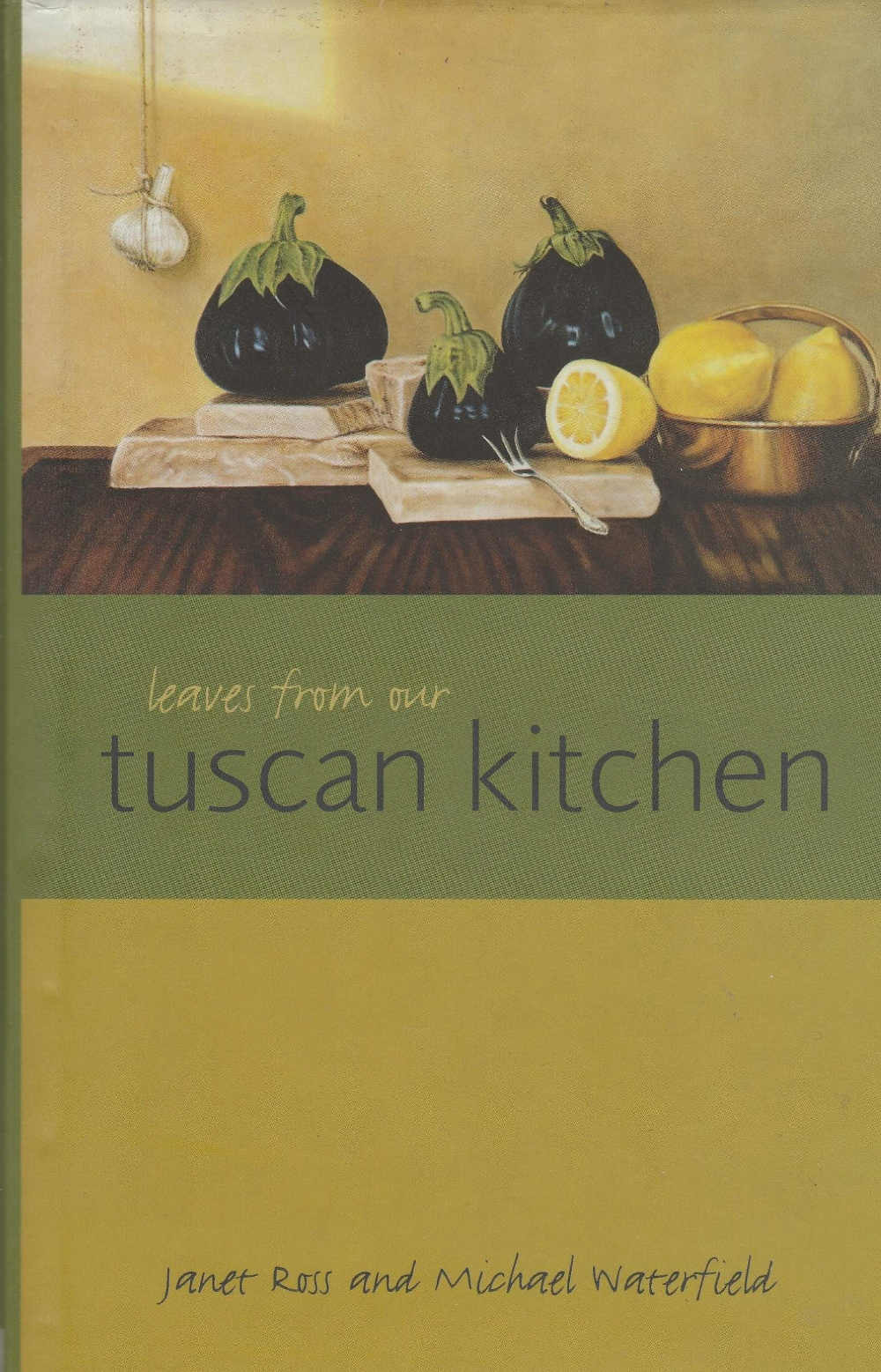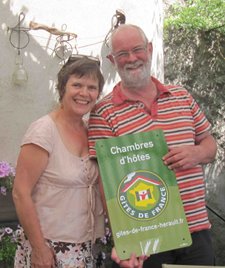An Irish Chef in France - The Wife of Bath

Euro-Toques chef Martin Dwyer, is much missed in Ireland since he and his wife Sile sold their eponymous restaurant in Waterford and moved to France. They now live in the Languedoc, where they take guests - and feed them very well.
This month: The Wife of Bath
The notion of gap years in a career was not totally invented by the present generation. After about two and a half years in our first jobs in Dublin, mine in Snaffles as a chef, Sile as a teacher in Basin Lane in the Liberties, we decided to throw all up and head for the world outside while we still had the liberty to do so.
We had a brief sojourn in France (and that’s another story) but ended up in England (which seemed quite as far away as Australia does today) in 1974, full of equal measures of fear and hope.
My restaurant guide bible at that time was the Good Food Guide. We went through it with a fine tooth comb and picked out about 30 restaurants or small hotels where we felt we might fit in and learn something. We wrote them an honest letter, indicating that we were keen but little else and then sat back and waited to see if we would get any replies. Incredibly we got about 28 encouraging letters.
Most of them were very polite refusals, about ten were job offers of various sorts. Our confidence, which was just about at bottom, soared. We picked out the two most tempting offers, one in Kent, one in The Lake District and made arrangements to be interviewed in both. The Wife of Bath in the tiny village of Wye in Kent was our first interview.
When we got there the door of the restaurant was answered by a scrawny lanky man in a very torn jumper who I assumed to be some sort of a gardener. Of course he turned out to be the proprietor, Michael Waterfield.
After talking to him for a few minutes I knew that I wanted to work here more than anywhere else. This man was, and still is, the most gentle, unassuming man I have ever met in a kitchen. As proprietor of a restaurant, which was at that time recognised as one of the top ten in England, he had none of the characteristics of a prima donna chef.
Michael ran his kitchen with kindness and understanding, he never raised his voice, didn’t know how to be sarcastic, and still produced marvellous food. He became, and still to this day is, my role model of how a kitchen should be run. He had a job for me in the kitchen and one for Sile working in the little bar taking the diners orders. We started the following week.
The Wife of Bath was named after the character in Chaucer’s Canterbury Tales (we were very close to the Pilgrims Way to Canterbury) and also because Michael’s wife Hilary came from Bath. As I said Michael was running one of the most renowned restaurants in England of the time. He had trained, like so many of his successful chef colleagues, under George Perry Smith in “The Hole in the Wall” in Bath.
Perry Smith is reckoned to be the man who translated the ideas of Elizabeth David into food for restaurants and was responsible for the huge raising of standards in catering in England, the reverberations of which can be felt in modern Britain’s culinary confidence and skill.
It was an exciting time to be in a kitchen in England, and Wye was a great village to live in.The village was just a short train journey from Canterbury and about 90 mts by train from London. We actually could (and did) go to the theatre or cinema there and get the last train home. The Kent coast was about 30 minutes away and Bob, the other chef, brought us to swim in Sandgate any hot afternoon when we were free.
The restaurant was also much visited by the local celebrities. Edward Heath, the then prime minister, ate often and as he ate in the private room at the back of the kitchen he had to pass by the pots and pans with his bodyguards to get there. He endeared himself to me by being obviously passionate about his food and found it hard to pass a pot of sauce or a bowl of dessert without begging for a taste.
But far more important than mere politicians we were hosts to cookery writers from time to time. Mary Berry, now enjoying a second renaissance on British TV, was often there and on one momentous day Elizabeth David had lunch on her way to catch the ferry in Dover.
Village life in England was a very new experience to us. For a long time we thought the villagers were cold and unfriendly. This was the time of the height of the IRA campaigns in England so we weren’t pushing ourselves forward anyway.
By coincidence, at that time someone in Ireland sent us a copy of Hibernia magazine. There was an article in this written by an Englishman who moved to the west of Ireland who couldn’t get over how friendly (intrusive?) the natives were. The explanation was quite simple. English people thought it impolite to ask newcomers about themselves, Irish people thought it impolite not to.
After 18 months in Wye our first daughter Caitriona was born and we were overwhelmed by the reaction of the villagers. They queued up at our door to bring presents, we bought absolutely nothing for the baby as everyone had hand me downs they were only too keen to give us. We had been accepted and now they were only too happy to be friendly.I doubt if we would have met with such kindness in a similar Irish village.
Thinking back on it all now I find it strange that I have no memory of ever being homesick while we lived in Wye. We made lots of friends there. Bob and his wife Janet were very kind to us and entertained us frequently and generously. We were much taken by the Waterfield family. Michael kindly agreed to be Caitriona’s godfather, and Olga Wills, an Irish ex-pat like ourselves,who did the wash-up, agreed to be her godmother.
However it was the excellent , honest and simple food that is my best memory of our time in The Wife of Bath. While we were there Michael was updating his great Aunt, Janet Ross’s Italian cook book, “Leaves from a Tuscan Kitchen” for Penguin Books.
This wonderful little book on cooking vegetables was quite a revolutionary volume in the early seventies. It is amazing to see how it captures the simplicity of Italian cooking a full 25 years before the great success of The River Café.
After two years we felt the time was right for us to come home so, in March 1977 we packed all our hand me downs together and sailed with Caitriona on the Inisfallen back to Cork. Our time abroad was only ever intended to be a few years, we knew that we wanted to bring up our children in Ireland but still we left Wye with real regret.
(Incidentially Leaves from a Tuscan Kitchen has been reprinted and re-issued by Grubb Street Press and no serious kitchen should be without it.)
-------------
 Martin Dwyer started cooking professionally over 40 years ago in the legendary “Snaffles Restaurant” in Dublin. After a time in a Relais Chateau in Anjou and in “The Wife of Bath” in Kent he opened his own much acclaimed restaurant, “Dwyers”, in Waterford in 1989. In 2004 he sold this and moved south to France where he and his wife Síle bought and restored an old presbytery in a village in the Languedoc. They now run Le Presbytère as a French style Chambre d’Hôte. Martin however is far too passionate about food to give up cooking so they now enjoy serving dinner to their customers on the terrace of Le Presbytère on warm summer evenings. Martin runs occasional cookery courses in Le Presbytère and Síle’s brother Colm does week long Nature Strolls discovering the Flora and Fauna of the Languedoc.
Martin Dwyer started cooking professionally over 40 years ago in the legendary “Snaffles Restaurant” in Dublin. After a time in a Relais Chateau in Anjou and in “The Wife of Bath” in Kent he opened his own much acclaimed restaurant, “Dwyers”, in Waterford in 1989. In 2004 he sold this and moved south to France where he and his wife Síle bought and restored an old presbytery in a village in the Languedoc. They now run Le Presbytère as a French style Chambre d’Hôte. Martin however is far too passionate about food to give up cooking so they now enjoy serving dinner to their customers on the terrace of Le Presbytère on warm summer evenings. Martin runs occasional cookery courses in Le Presbytère and Síle’s brother Colm does week long Nature Strolls discovering the Flora and Fauna of the Languedoc.
Le Presbytère can be seen at: www.lepresbytere.net;
email: martin@lepresbytere.net
Twitter: www.twitter.com/DwyerThezan





There are currently no comments
Leave a comment
Not a member? Register for your free membership now!
Or leave a comment by logging in with: